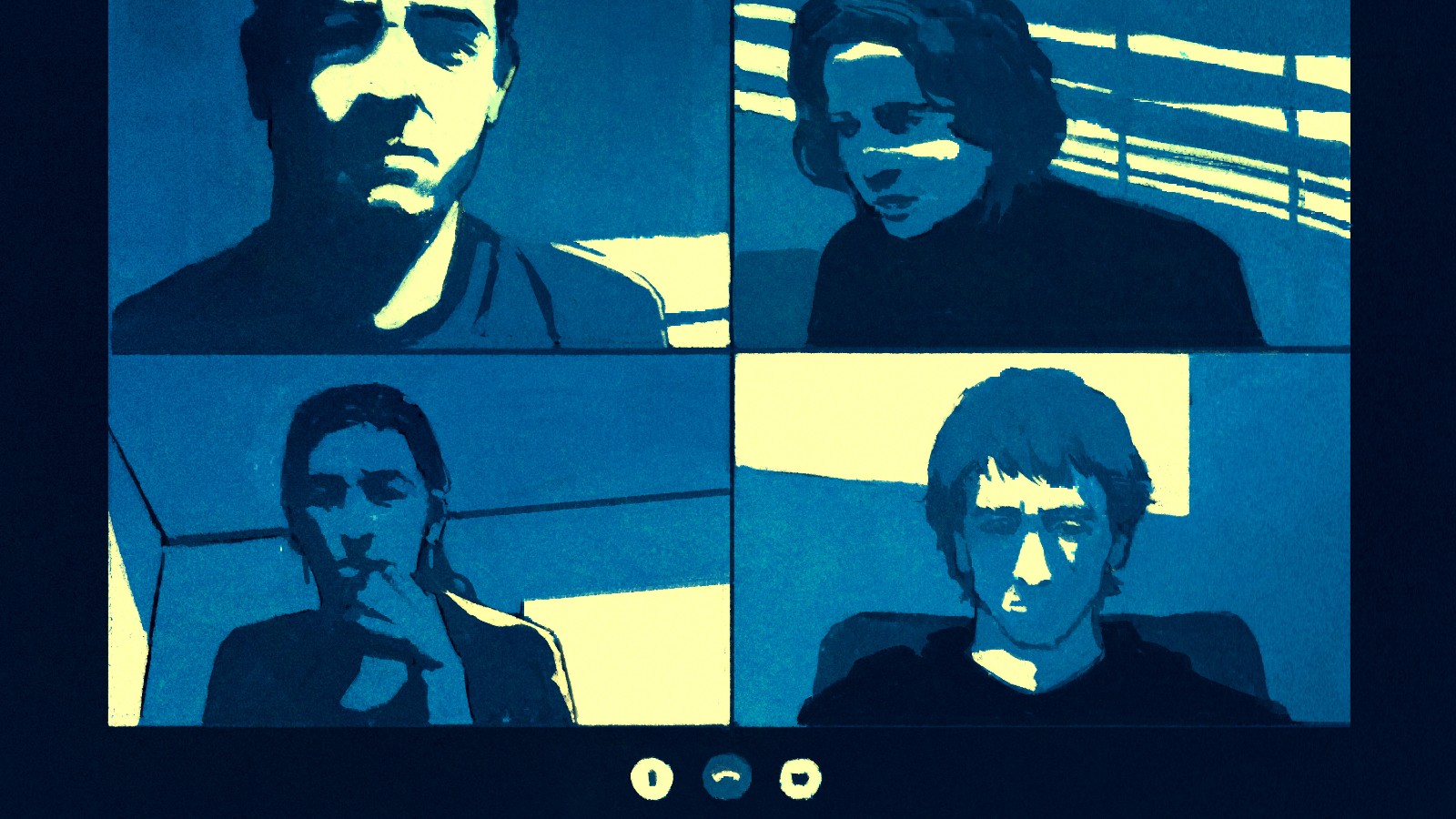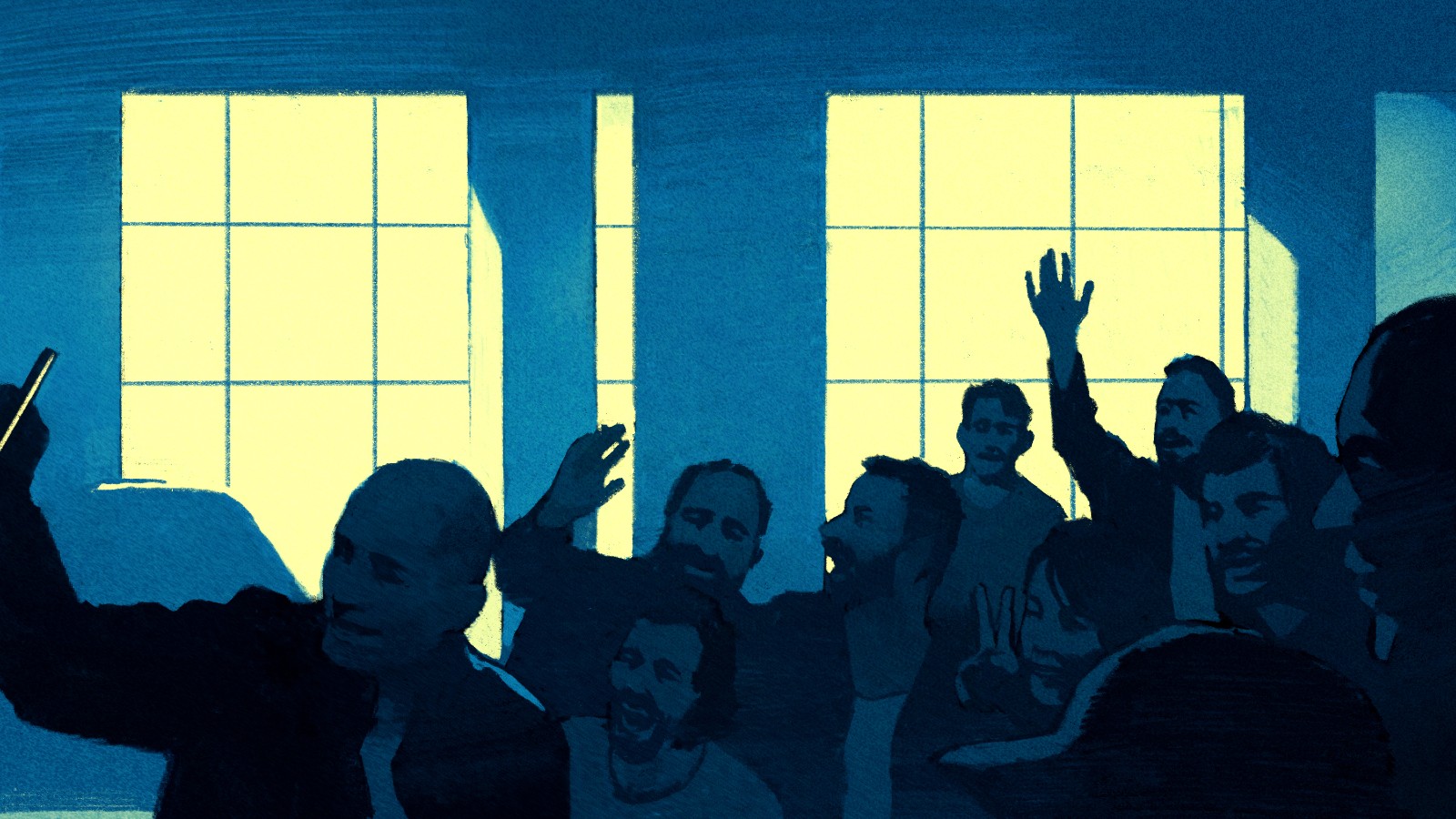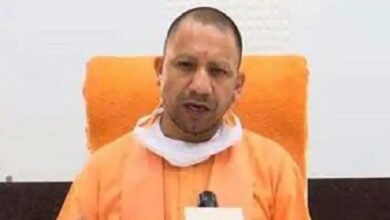[ad_1]
About noon on Nov. 17, Sam Altman, CEO of OpenAI, logged into a video call from a luxury hotel in Las Vegas. He was in the city for its inaugural Formula One race, which had drawn 315,000 visitors including Rihanna and Kylie Minogue.
Altman, who had parlayed the success of OpenAI’s ChatGPT chatbot into personal stardom beyond the tech world, had a meeting lined up that day with Ilya Sutskever, chief scientist of the artificial intelligence startup. But when the call started, Altman saw that Sutskever was not alone — he was virtually flanked by OpenAI’s three independent board members.
Instantly, Altman knew something was wrong.
Unbeknownst to Altman, Sutskever and the three board members had been whispering behind his back for months. They believed Altman had been dishonest and should no longer lead a company that was driving the AI race. On a call the previous afternoon, the board members had voted one by one to push Altman out of OpenAI.
Now they were delivering the news. Shocked that he was being fired from a startup he had helped found, Altman asked, “How can I help?” The board members urged him to support an interim CEO. He assured them that he would.
Within hours, Altman changed his mind and declared war on OpenAI’s board.
His ouster was the culmination of years of simmering tensions at OpenAI that pit those alarmed by AI’s power against others who saw the technology as a once-in-a-lifetime profit and prestige bonanza. As divisions deepened, the organization’s leaders sniped and turned on one another. That led to a boardroom brawl that ultimately showed who has the upper hand in AI’s future development: Silicon Valley’s tech elite and deep-pocketed corporate interests.
The drama embroiled Microsoft, which had committed $13 billion to OpenAI and weighed in to protect its investment. Many top Silicon Valley executives and investors also mobilized to support Altman.
Some fought back from Altman’s $27 million mansion in San Francisco, lobbying through social media and voicing their displeasure in private text threads, according to interviews with more than 25 people with knowledge of the events.
At the center of the storm was Altman, a 38-year-old multimillionaire.
 Split over the leadership of Sam Altman, board members and executives at OpenAI turned on one another. Their brawl exposed the cracks at the heart of the artificial intelligence movement. (Hokyoung Kim/The New York Times)
Split over the leadership of Sam Altman, board members and executives at OpenAI turned on one another. Their brawl exposed the cracks at the heart of the artificial intelligence movement. (Hokyoung Kim/The New York Times)
An Incendiary Mix
From the moment it was created in 2015, OpenAI was primed to combust.
The San Francisco lab was founded by Elon Musk, Altman, Sutskever and nine others. Its goal was to build AI systems to benefit all of humanity. Unlike most tech startups, it was established as a nonprofit with a board that was responsible for making sure it fulfilled that mission.
The board was stacked with people who had competing AI philosophies. On one side were those who worried about AI’s dangers, including Musk, who left OpenAI in a huff in 2018. On the other were Altman and those focused more on the technology’s potential benefits.
In 2019, Altman — who had extensive contacts in Silicon Valley as president of startup incubator Y Combinator — became OpenAI’s CEO. He would own just a tiny stake in the startup.
Earlier this year, departures shrank OpenAI’s board to six people from nine. Three — Altman, Sutskever and Greg Brockman, OpenAI’s president — were founders of the lab.
Helen Toner, a director of strategy at Georgetown University’s Center for Security and Emerging Technology, was part of the effective altruist community that believes AI could one day destroy humanity. Adam D’Angelo had long worked with AI as CEO of the question-and-answer website Quora. Tasha McCauley, an adjunct scientist at the Rand Corp., had worked on tech and AI policy and governance issues and taught at Singularity University, which was named for the moment when machines can no longer be controlled by their creators.
They were united by a concern that AI could become more intelligent than humans.
Tensions Mount
After OpenAI introduced ChatGPT last year, the board became jumpier.
As millions of people used the chatbot to write love letters and brainstorm college essays, Altman embraced the spotlight. He appeared with Satya Nadella, Microsoft’s CEO, at tech events.
Yet, as Altman raised OpenAI’s profile, some board members worried that ChatGPT’s success was antithetical to creating safe AI, two people familiar with their thinking said.
Their concerns were compounded when they clashed with Altman in recent months over who should fill the board’s three open seats.
In September, Altman met investors in the Middle East to discuss an AI chip project. The board was concerned that he wasn’t sharing all his plans with it, three people familiar with the matter said.
 Split over the leadership of Sam Altman, board members and executives at OpenAI turned on one another. Their brawl exposed the cracks at the heart of the artificial intelligence movement. (Hokyoung Kim/The New York Times)
Split over the leadership of Sam Altman, board members and executives at OpenAI turned on one another. Their brawl exposed the cracks at the heart of the artificial intelligence movement. (Hokyoung Kim/The New York Times)
What Did Sam Do
When news broke of Altman’s firing on Nov. 17, a text landed in a private WhatsApp group of more than 100 CEOs of Silicon Valley companies, including Meta’s Mark Zuckerberg and Dropbox’s Drew Houston.
“Sam is out,” the text said.
The thread immediately blew up with questions: What did Sam do?
That same query was being asked at Microsoft, OpenAI’s biggest investor. As Altman was being fired, Kevin Scott, Microsoft’s chief technology officer, got a call from Mira Murati, OpenAI’s chief technology officer. She told him that in a matter of minutes, OpenAI’s board would announce that it had canned Altman and that she was the interim chief.
Scott immediately asked someone at Microsoft’s headquarters in Redmond, Washington, to get Nadella out of a meeting he was having with top lieutenants. Shocked, Nadella called Murati about the OpenAI board’s reasoning, three people with knowledge of the call said. In a statement, OpenAI’s board had said only that Altman “was not consistently candid in his communications” with the board. Murati didn’t have answers.
Nadella then phoned D’Angelo, OpenAI’s lead independent director. What could Altman have done, Nadella asked, to cause the board to act so abruptly? Was there anything nefarious?
“No,” D’Angelo replied, speaking in generalities. Nadella remained confused.
Turning the Tables
Shortly after Altman’s removal from OpenAI, a friend reached out to him. It was Brian Chesky, Airbnb’s CEO.
Chesky asked Altman what he could do to help. Altman said he wanted to talk.
When they spoke on Nov. 17, Chesky peppered Altman with questions about why OpenAI’s board had terminated him. Altman said he was as uncertain as everyone else.
At the same time, OpenAI’s employees were demanding details. The board dialed into a call that afternoon to talk to about 15 OpenAI executives, who crowded into a conference room at the company’s offices in San Francisco.
The board members said that Altman had lied to the board but that they couldn’t elaborate for legal reasons.
Jason Kwon, OpenAI’s chief strategy officer, accused the board of violating its fiduciary responsibilities. “It cannot be your duty to allow the company to die,” he said, according to two people with knowledge of the meeting.
Toner replied, “The destruction of the company could be consistent with the board’s mission.”
OpenAI’s executives insisted that the board resign that night or they would all leave.
The support gave Altman ammunition. He flirted with creating a new startup, but Chesky and Ron Conway, a Silicon Valley investor and friend, urged Altman to reconsider.
Altman decided to take back what he felt was his.
Even as the board considered bringing Altman back, it wanted concessions. That included bringing on new members who could control Altman. The board encouraged the addition of Bret Taylor, Twitter’s former chair. As insurance, the board also sought another interim CEO in case talks with Altman broke down.
 Split over the leadership of Sam Altman, board members and executives at OpenAI turned on one another. Their brawl exposed the cracks at the heart of the artificial intelligence movement. (Hokyoung Kim/The New York Times)
Split over the leadership of Sam Altman, board members and executives at OpenAI turned on one another. Their brawl exposed the cracks at the heart of the artificial intelligence movement. (Hokyoung Kim/The New York Times)
Breaking the Logjam
At 4:30 a.m. on Nov. 20, D’Angelo was awakened by a phone call from a frightened OpenAI employee. If D’Angelo didn’t step down from the board, the employee said, the company would collapse.
Over the past few hours, D’Angelo realized, things had worsened.
Just before midnight, Nadella had posted on X that he was hiring Altman and Brockman to lead a lab at Microsoft. That morning, more than 700 of OpenAI’s 770 employees had also signed a letter saying they might follow Altman to Microsoft unless the board resigned.
One name on the letter stood out: Sutskever, who had changed sides.
OpenAI’s viability was in question. The board members had little choice but to negotiate.
To break the impasse, D’Angelo and Altman talked the next day. D’Angelo suggested former Treasury Secretary Lawrence Summers, a professor at Harvard, for the board. Altman liked the idea.
Summers spoke with D’Angelo, Altman, Nadella and others. Each probed him for his views on AI and management, while he asked about OpenAI’s tumult. He said he wanted to be sure that he could play the role of a broker.
Summers’ addition pushed Altman to abandon his demand for a board seat and agree to an independent investigation of his leadership and dismissal.
By late Nov. 21, they had a deal. Altman would return as CEO, but not to the board. Summers, D’Angelo and Taylor would be board members, with Microsoft eventually joining as a nonvoting observer. Toner, McCauley and Sutskever would leave the board.
This week, Altman and some of his advisers were still fuming. They wanted his name cleared.
“Do u have a plan B to stop the postulation about u being fired its not healthy and its not true!!!,” Conway texted Altman.
Altman said he was working with OpenAI’s board: “They really want silence but i think important to address soon.”
This article originally appeared in The New York Times.
[ad_2]





